If Restore a File to Previous Version Can You Restore Again to Another Previous Version
In previous versions of Windows, saving over a file was a disaster (at least when it was unintended). Across Organisation Restore, Windows had no congenital-in options for rolling back accidental changes to files. The original version of your file was lost unless y'all'd managed to salvage it with a new filename.
Realizing this was an issue, Microsoft introduced File History, a feature that allows you to roll back changes to your files, but there are alternatives if you'd adopt to employ a third-political party solution. To restore previous versions of files in Windows 10, here'south what you'll need to practice.
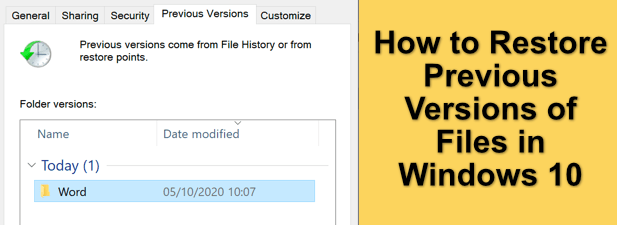
Restore Previous Versions of Files Using File History
If y'all desire to roll back the changes to a file and restore a previous version, the best way to exercise it is to use Windows' own file versioning features. You'll need to have enabled File History first, which typically uses an external bulldoze (or networked bulldoze in some cases) to shop the files.
If File History isn't enabled, then yous may not be able to restore a previous version in Windows 10 unless you lot're already syncing your files to cloud storage.
- Y'all can bank check if File History is enabled in the Windows Settings menu. Right-click the Beginning carte du jour and select the Settings selection to begin.
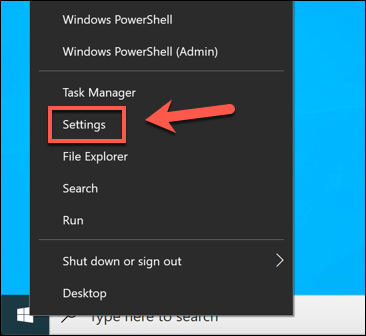
- In the Windows Settings carte, select Update & Security > Fill-in. Underneath the Back upward using File History pick, the drive you currently use for File History backups will be listed. If ane isn't listed, then you lot'll need to enable File History by selecting the Add a drive option.
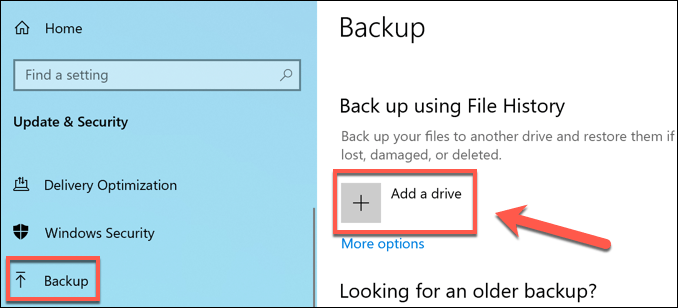
- A list of bachelor external drives will appear in a drop-down menu. Select ane of these to enable File History. The Fill-in menu will update with a slider allowing you to switch File History on and off in one case you've done this. You tin select which folders it monitors past selecting More options underneath the slider.
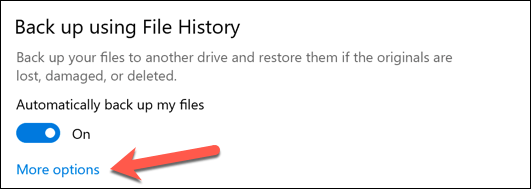
- In the More options menu, you tin add or remove folders to monitor for File History by selecting the Add a folder option underneath the Support these folders category.
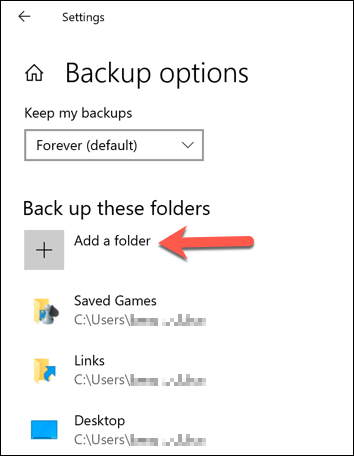
- You can also change how often files are backed up and how oftentimes the backups are stored for. To change these settings, change the settings using the Back up my files and Keep my backups drop-downwards menus.
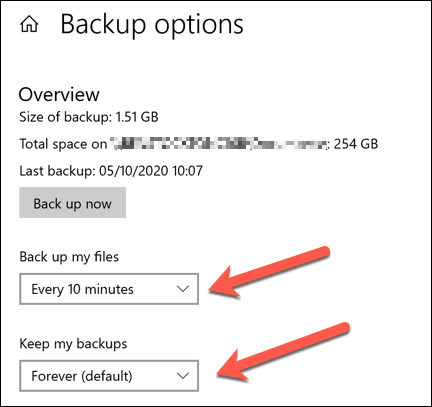
- In one case File History is enabled and monitoring the right folders, you can restore previous versions of files using Windows File Explorer. This will but work for files yous edit after File History has been enabled. To do this, open up File Explorer and observe the file or folder containing the file yous wish to restore. Right-click the file or folder, so select the Restore previous versions option.
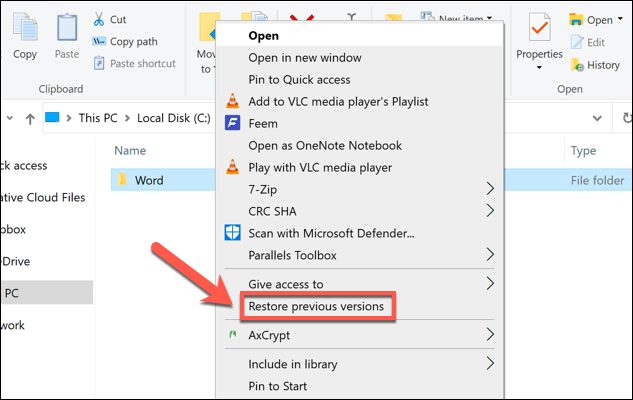
- In the Previous Versions tab of the Properties window, you'll encounter a listing of previous versions of your file or binder. To view the file or folder, select the version y'all want to restore from the list, and so select the Open button at the lesser. If yous desire to restore information technology, select Restore instead.
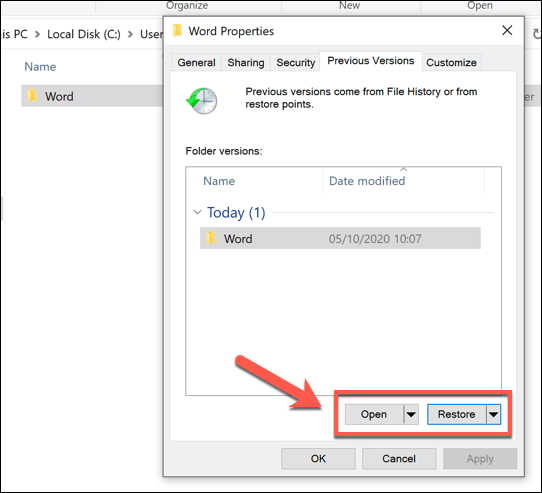
- If you select Restore, the previously saved files will overwrite the new files. To save both copies, select the downwards arrow adjacent to the Restore button first, then cull Restore To instead.
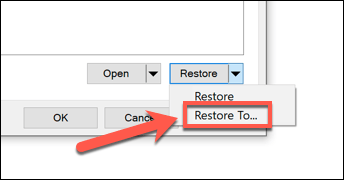
- Select a new folder to salvage the previous versions of your files, then select the Select Folder option.
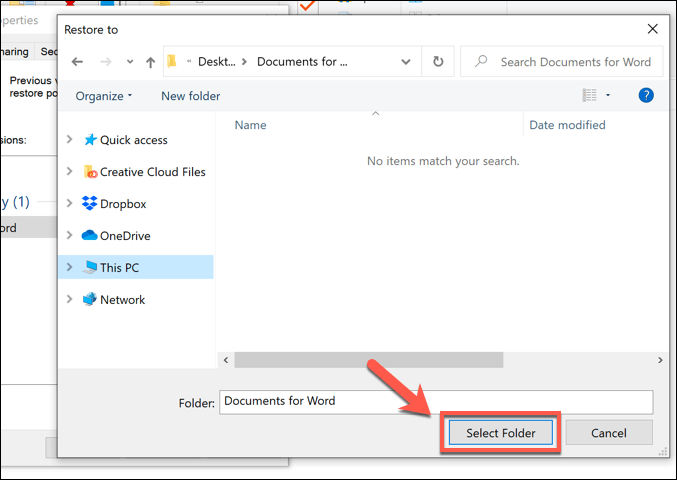
Windows File Explorer will open to show you the restored files, whether you selected to overwrite the new copies or salve them elsewhere instead. This option, every bit we've mentioned, but works if y'all had File History enabled before you lot made changes to files.
Unfortunately, there aren't many options to help you lot restore previous versions in Windows 10 if y'all don't already have a backup system in place. You may take more luck if you deleted the file, however, as Microsoft now offers a Windows File Recovery tool to help recover lost files.
Using 3rd Party File Versioning Software
Windows File History is a great option for file versioning, but it relies on using an external drive for backups, and backups are limited to every xv minutes. While it does support network drives, support for this does seem to be more problematic, depending on how your network is configured.
With that in mind, you may adopt to use tertiary-party file versioning software instead. While paid options exist, 1 of the simplest file versioning apps for Windows is AutoVer, a free app that volition allow you to regularly support your files to external drives, network attached storage drives, and offsite FTP servers.
- To offset, download and install AutoVer on your Windows PC. One time the software is installed, you can brainstorm to monitor sure folders by selecting the Add together New Watcher icon in the AutoVer client.
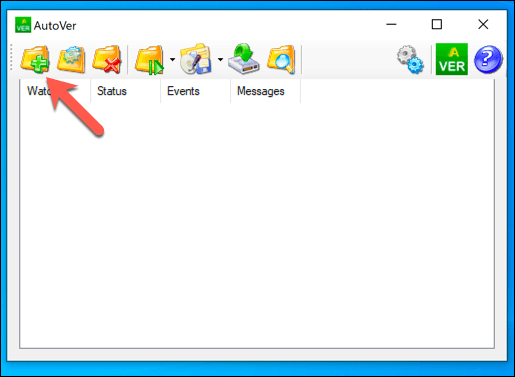
- Y'all'll need to place the binder you wish to monitor, as well as the location to salve the file backups. Provide a proper noun for your monitor rule in the Name box. Under Lookout Folder, provide the location of the folder or drive you wish to monitor. Finally, provide a location to save the backups in the Backup To box. You lot tin can choose to use a local fill-in location similar an external drive, or switch to fill-in files over FTP, by choosing between the Backup Type options.
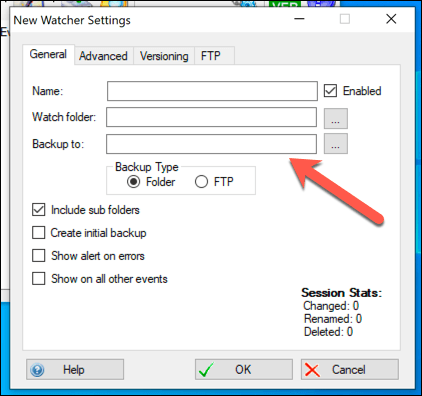
- In the Versioning tab, you can select how long you wish to save your backup files for. If yous plan on bankroll up to a remote server, you tin fix your FTP connection settings in the FTP tab. Once you're happy with the changes, select the OK button to salve your changes.
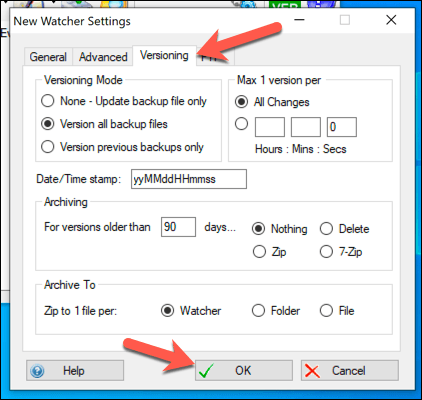
- AutoVer volition automatically support any changes to your files, almost as soon as you make changes. To run the watcher rule immediately and begin a new backup, however, select the Synchronize the selected Watcher (Backup now!) button.
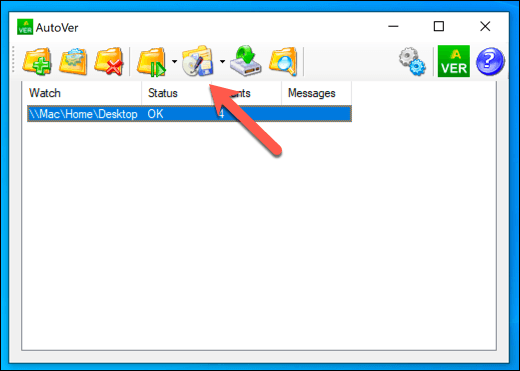
- If you desire to view backed upward files, you can do so past right-clicking the watcher rule and selecting the Explore backups option. This will open AutoVer File Explorer, allowing yous to view the files that have been saved. If yous want to restore an earlier version of a file, you tin can select one of the versions of it, selecting a dated version in the correct-paw column, then selecting the Restore File push.
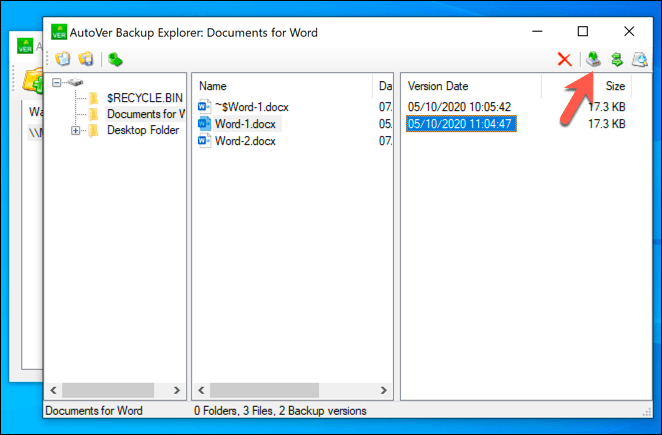
While AutoVer may await a trivial dated, it works incredibly well in regularly backing up your files and giving you a 3rd-party option for file versioning in Windows 10. Files are backed up virtually immediately, letting y'all apace recover changes to files that may have been changed by mistake.
While deject storage services similar Google Drive are alternative options, you're express to how often versions of the file can be stored for. This makes unlimited file versioning, like those offered past AutoVer, a superior solution for long-term backups.
Keeping Your Windows 10 Files Safe
Your PC won't last forever, so it's of import to e'er accept a backup system in mind for Windows. Restoring previous versions of files in Windows x is much easier if you begin using offsite cloud storage, like Google Backup and Sync, to shop copies of your files.
If you're only worried nearly rolling back small changes, notwithstanding, and then Windows' congenital-in file history should work well, but yous can save versions of files more regularly using tools similar AutoVer. If you've deleted files by fault, you may exist able to recollect them using third-party software like Shadow Explorer.
Do not share my Personal Information.
mcclintockwatty1988.blogspot.com
Source: https://www.online-tech-tips.com/windows-10/how-to-restore-previous-versions-of-files-in-windows-10/
0 Response to "If Restore a File to Previous Version Can You Restore Again to Another Previous Version"
Post a Comment